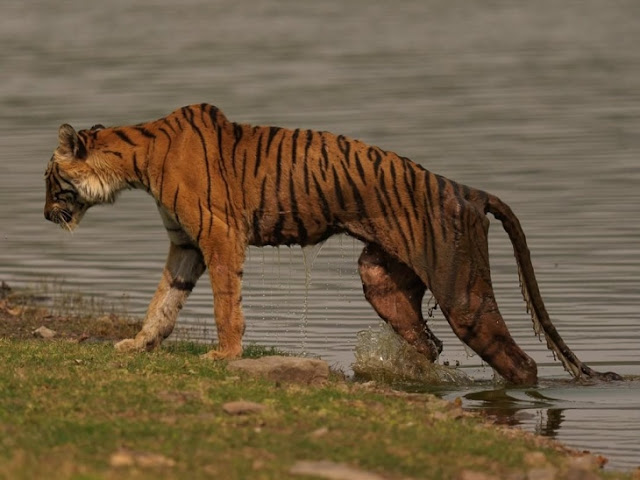Ranthambore, Rajasthan | June 21, 2025
In a heartbreaking development for wildlife lovers across India, Arrowhead (T-84)—one of Ranthambore’s most iconic tigresses—has died after a long illness. Her death came just hours after her daughter Kankati (T-2507) was relocated to Mukundra Hills Tiger Reserve, making the event feel even more tragic.
According to Ranthambore Tiger Reserve (RTR) officials, Arrowhead died on June 19 due to a brain tumour. A post-mortem report confirmed that she also had multiple organ failure.
Wildlife photographer Sachin Rai, who captured Arrowhead’s final moments, shared an emotional video of her lying under a tree in Padam Talab, the area she had ruled for years.
“It was heartbreaking to watch,” Rai wrote. “She tried to get up but could only walk a few weak steps before falling again. I knew the end was near.”
A Life Full of Strength and Struggle
Arrowhead’s life was never easy. She inherited her territory from her legendary mother Krishna (T-19) and became a mother to many cubs. She faced challenges from rival males and even had to fight her own daughter Riddhi, who eventually displaced her.
Rai, who had been photographing Arrowhead since she was a cub, wrote:
“She was fiercely independent and brave. Arrowhead symbolized wild beauty, patience, and survival. She will never be forgotten.”
A Strange Coincidence
Arrowhead’s death happened on the same day her daughter Kankati was shifted to Mukundra Hills. Kankati was in the news earlier this year for killing a 7-year-old boy. RTR Field Director Anoop K R called it a “disheartening coincidence” and confirmed that Arrowhead had been unwell for a long time.
Viral Moment Before the End
Just weeks ago, Arrowhead went viral on social media after a video showed her hunting a crocodile, reminding people of the famous Ranthambore tigress Machhli, known as the “Crocodile Hunter.” Many believed Arrowhead would carry forward her mother’s powerful legacy.
Final Goodbye
Arrowhead was 11 years old. After her death, forest officials and wildlife lovers paid their last respects. She was cremated with full forest protocols, closing an unforgettable chapter in Ranthambore’s wildlife history.



